Tillage Systems
Humans have developed many different ways to prepare the soil to plant crops, with the primary goal of achieving good seed to soil contact to keep seeds moist as they germinate and grow. There are some benefits of tillage. For instance, tillage enables the farmer to bury or mix-in crop residues that insulate the soil and keep it moist and cool which can delay crop seed germination in cool environments. By burying the insulating crop residues, solar radiation can warm the soil more quickly. Tillage can also terminate weeds, cover crops or perennials, and bury weed seeds and crop residues that may harbor pathogens and insect seeds; tillage also mixes in soil amendments, such as fertilizer and animal manures.
In conventional tillage systems, primary tillage equipment such as the moldboard plow or a rototiller inverts the soil. A second tillage event or plow is often used afterward to break up large soil clods into smaller particles, with the goal of improving seed to soil contact. See photos below.
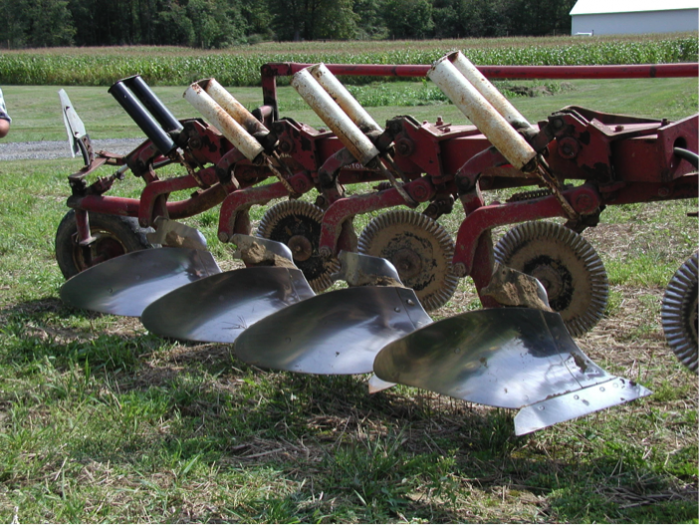
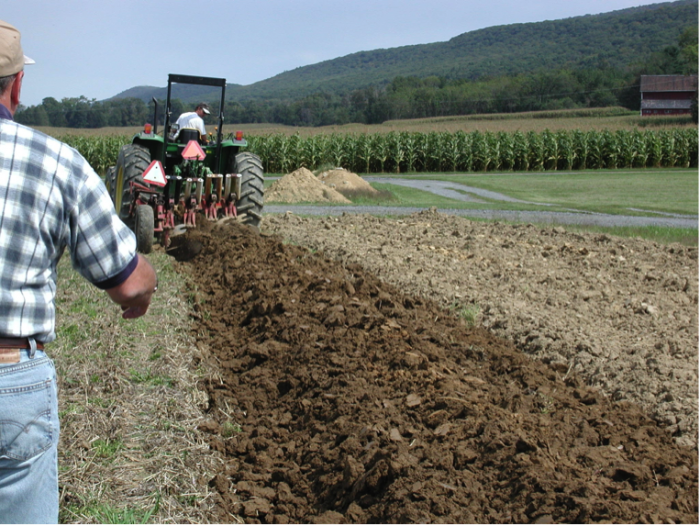
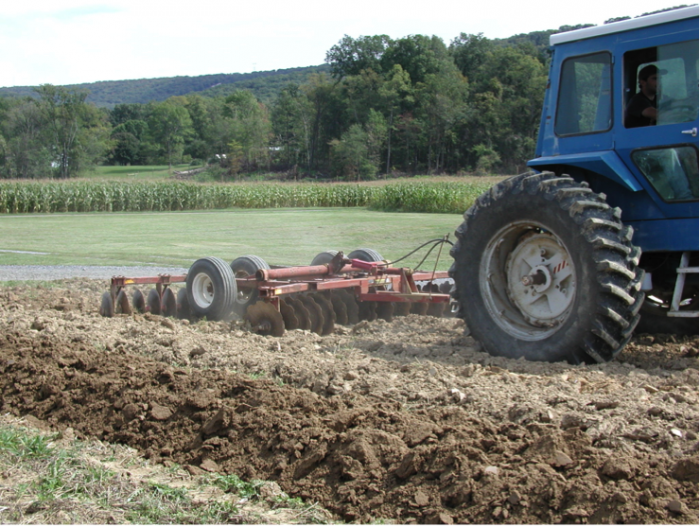
Removing or mixing-in crop residue leaves the soil exposed and prone to wind and water erosion, as well as soil moisture loss. Tilling crop residue into the soil also makes residues more accessible to soil organisms and incorporates oxygen into the soil, increasing the decomposition rate of the residues and decreasing organic matter content at the soil surface and plow layers. Tillage also disrupts soil organisms, particularly mycorrhizal fungi, and soil physical properties such as water stable aggregates.
Conservation tillage or minimum tillage is another soil preparation method designed to reduce soil erosion by reducing disturbance and leaving some plant residue (at least 30%) on the surface. The soil is not inverted, but the surface is disturbed and often a high proportion of crop residues are mixed in with tillage equipment such as a disk plow or a chisel plow.
No-till or Direct-seeding is designed to eliminate tillage, by cutting a slit in the surface and placing the seed in the slit. In addition to minimizing crop residue disturbance, the crop is planted in one pass across the field, thereby reducing erosion, labor, and fuel needed to prepare a field and plant the crop.
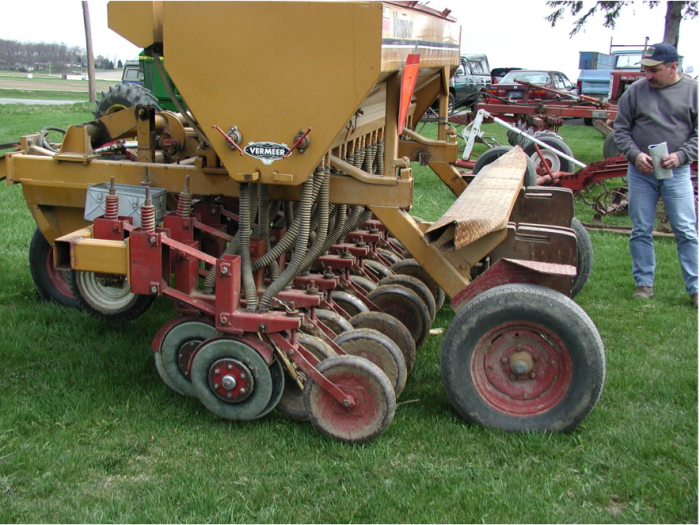
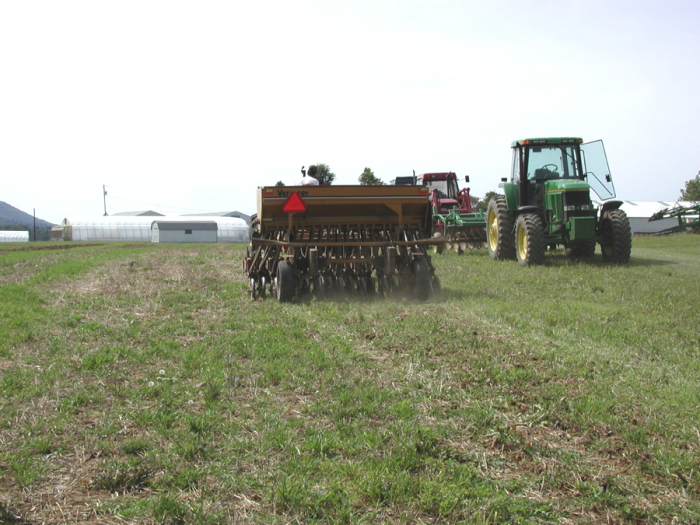
Some hurdles to no-till adoption As discussed earlier, there are a number of reasons that farmers till the soil. For instance, conventional tillage can terminate perennials, cover crops, and weeds prior to planting the subsequent crop. Without conventional tillage, farmers typically use herbicides to terminate the previous perennial or cover crop and control weeds. In cool environments, crop residues can harbor pathogen and insect pests, and insulate soil, which can slow soil warming in spring and delay crop emergence. These factors can reduce crop yield, particularly if farmers don't rotate crops to interrupt pest life cycles. In addition, although farmers typically need less tillage equipment to plant with no-till, there is an initial cost associated with purchasing no-till equipment for farmers who use conventional or conservation tillage equipment. And with new equipment, farmers need to learn how to adjust no-till planters to ensure that seed is planted at the optimal depth. Consequently, no-till planters are typically heavier to cut through crop residues and place seeds at a sufficient depth for good seed to soil contact.
Zone or strip tillage When soils have high crop residue and/or are high in organic matter, or are not well-drained, soils can remain cool and delay seed germination. Zone tillage or strip tillage incorporates the insulating crop residue in a narrow zone or strip of soil where the seed is placed. Residue between the seed planting zones is not disturbed or removed. Removing the soil insulating layer increases the rate of soil drying and warming in close proximity to the seed, promoting earlier seed germination compared to soil with residue left intact.
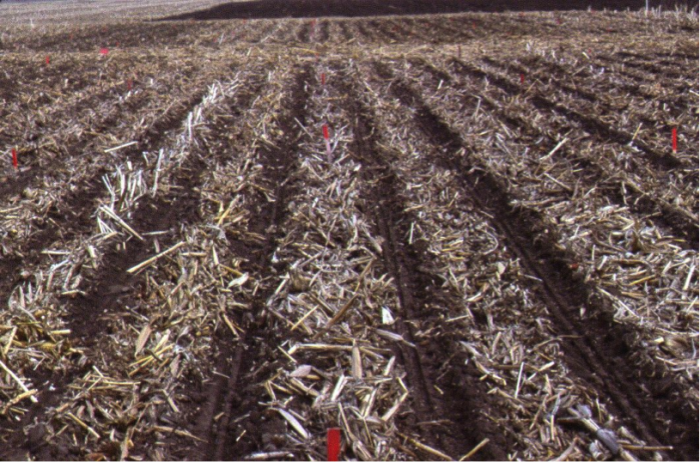
Reading
Read more about tillage and how it impacts soil, in Chapter 16 (Reducing Tillage) of Building Soils for Better Crops.
